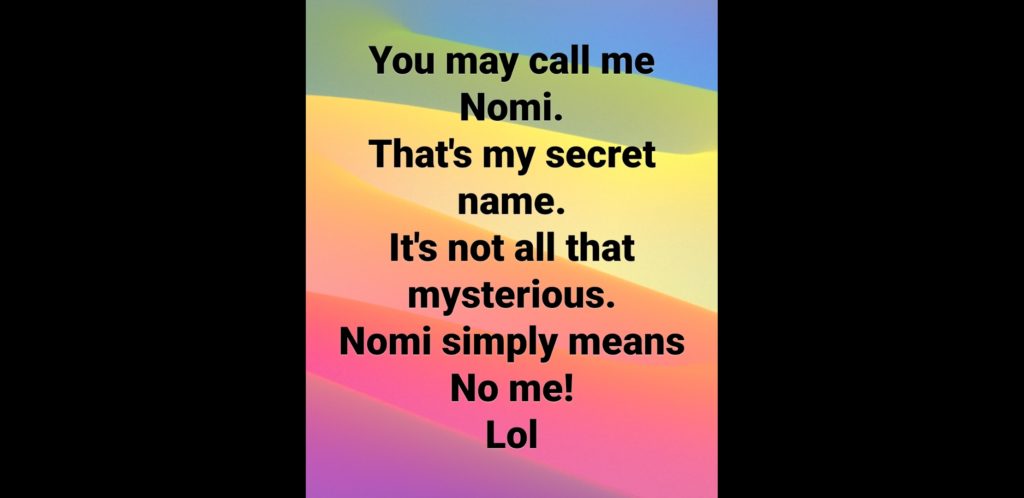Everything is Sat-Chit-Ananda -Self only
▪︎▪︎▪︎▪︎▪︎▪︎▪︎
Whatever is found to exist is Sat (Existence) only.
Whatever is pleasurable is Ananda (Bliss) only.
One should ever abide in the
bedrock bhavana of Sat-Chit-Ananda.
Never for once should oneslip,
even inadvertently,
into the disastrous bhavana that one is the
body and that the world is real.
🕉 Ribhu Gita. Ch.25, v.12
■■■■■■■■■■■■■■■■■■■■■■■■
Satchitananda (Sanskrit: सच्चिदानंद, IAST: Saccidānanda) or Sacchidānanda representing “existence, consciousness, and bliss” or “truth, consciousness, bliss”, is an epithet and description for the subjective experience of the ultimate unchanging reality, called Brahman, in certain branches of Hindu philosophy, especially Vedanta.
Etymology
Satchitananda (Sanskrit: सच्चिदानन्द) is a compounded Sanskrit word consisting of “sat”, “chit” and “ananda”, all three considered as inseparable from the nature of ultimate reality called Brahman in Hinduism. The different forms of spelling is driven by euphonic (sandhi) rules of Sanskrit, useful in different contexts.
- sat (सत्): In Sanskrit sat means “being, existence”, “real, actual”, “true, good, right”, or “that which really is, existence, essence, true being, really existent, good, true”.
- chit (चित्): means “consciousness”.
- ānanda (आनन्द): means “happiness, joy, bliss”, “pure happiness, one of three attributes of Atman or Brahman in the Vedanta philosophy”. Loctefeld and other scholars translate ananda as “bliss”.
Satchitananda is therefore translated as “Truth Consciousness Bliss”, “Reality Consciousness Bliss”, or “Existence Consciousness Bliss”.
Discussion
The term is contextually related to “the ultimate reality” in various schools of Hindu traditions. In theistic traditions, sacchidananda is same as God such as Vishnu, Shiva or Goddess in Shakti traditions. In monist traditions, sacchidananda is considered directly inseparable from nirguna (attributeless) Brahman or the “universal wholeness of existence”, wherein the Brahman is identical with Atman, the true individual self. Satchitananda or Brahman is held to be the source of all reality, source of all conscious thought, and source of all perfection-bliss. It is the ultimate, the complete, the destination of spiritual pursuit in Hinduism.
Textual references
The Brihadaranyaka Upanishad (c. 800–600 BCE) is among the earliest Hindu texts which links and then discusses Atman (soul), Brahman (ultimate reality), awareness, joy and bliss such as in sections 2.4, 3.9 and 4.3. The Chandogya Upanishad (~800-600 BCE), in section 3.14 to 3.18, discusses Atman and Brahman, these being identical to “that which shines and glows both inside and outside”, “dear”, “pure knowing, awareness”, “one’s innermost being”, “highest light”, “luminous”. Other 1st-millennium BCE texts, such as the Taittiriya Upanishad in section 2.1, as well as minor Upanishads, discuss Atman and Brahman in saccidananda-related terminology.
An early mention of the compound word sacchidananda is in verse 3.11 of Tejobindu Upanishad, composed before the 4th-century CE. The context of sacchidananda is explained in the Upanishad as follows:
The realization of Atman.
(…) I am of the nature of consciousness.
I am made of consciousness and bliss.
I am nondual, pure in form, absolute knowledge, absolute love.
I am changeless, devoid of desire or anger, I am detached.
I am One Essence, unlimitedness, utter consciousness.
I am boundless Bliss, existence and transcendent Bliss.
I am the Atman, that revels in itself.
I am the Sacchidananda that is eternal, enlightened and pure.— Tejobindu Upanishad, 3.1-3.12 (Abridged)
Vedanta philosophy
Main article: Vedanta
The Vedantic philosophy understands saccidānanda as a synonym of the three fundamental attributes of Brahman. In Advaita Vedanta, states Werner, it is the sublimely blissful experience of the boundless, pure consciousness and represents the unity of spiritual essence of ultimate reality.
Saccidānanda is an epithet for Brahman, considered indescribable, unitary, ultimate, unchanging reality in Hinduism.,
Vaishnava philosophy
Main article: Vaishnavism
Tulsidas considers Rama as Satcitananda.
